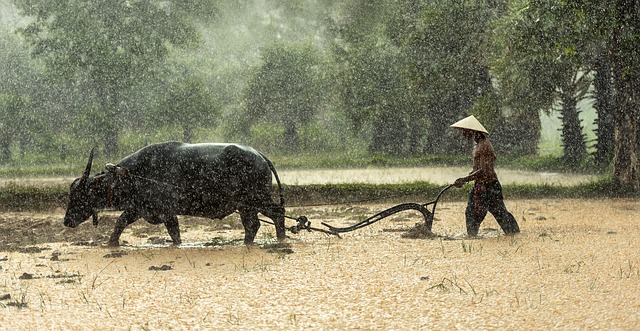Rice is one of the tastiest staples out there. To anyone who can cook rice well enough, the possibilities to satisfy your palette and gut are quite countless. You can mix rice with nearly anything out there and still get very tasty, succulent results. From spinach and camembert cheese with rice and tuna to mushroom and vegetable rice, there seems to be a world of inexhaustible opportunities.
But because rice is such an important dietary product, we must absolutely ask ourselves if we can sustain it. The good news is – we can. The bad news is that climate change might throw a few spanners in the works.
So, for rice farming to work, we need sustainable and established practices that will help us reap the rewards with none of the downsides – simple as that. Now, let’s have a look at what we have to be doing to make sure our rice farming practices are in fact sustainable.
Pre-Plant
Planting rice is definitely a tall order. There are so many things you need to consider. For example, did you know that there are over 40,000 varieties of rice – yes, there are 40,000+ different rice variations out there, and unlikely as it sounds, they are multiplying and creating new ones?
In a way, rice is a very resilient culture, but to be grown on the scale we need it to feed ourselves, humans need to show extra care. Planting the crops is important but so is reading weather patterns.
Farmers make sure they have the full picture before planting anything they have. Often, planting season might be delayed, depending on what the weather conditions are. Overall, rice growing is still overly-dependent on man’s decision and understanding of the season’s climate-related twists and turns.
Growth
Another important part is the growth of rice. You see, there are special techniques that allow the rice to develop itself, but to achieve it, people need to be able to understand the paddies and the correct environment for rice-growing.
Even though rice loves water and needs it to turn itself into an edible product, too much water can yet ruin the culture, so you need to be very careful. Rice, unlike other cultures, needs organic fertilizers when such products are available.
Not least of all, farmers are registering major losses of their crops. Around 30-40% of all rice dies worldwide, because of various pests. Not least of all, though, farmers aren’t supported well enough by the government and their labor is valued cheaply. Yet, nobody seems really interested in helping farmers develop and use AI to help them push the yields up. Farmers themselves are often too busy struggling out in the field to have the time to educate themselves on such manners.
Some strides have been done in Japan and China where second-generation farmers are now coming back to help their parents with robots and technology.
A lot is changing out there – not only how we farm. Professions from white-collar jobs to odd jobs are caught in a rapid change. For example, a locksmith had to deal only with mechanical locks, but many companies are now addressing electrical and digital locks as well. Some of the best companies for locksmithing to have embraced innovation can be seen here – just follow the link.
Harvest
Last but not least, you have to learn how to harvest rice properly. Farmers can rip the plant violently off the ground but they risk leaving a lot of unwanted material that could potentially make next planting more difficult.
Not least of all, if you don’t grow and cultivate your rice properly, you also risk reducing the total yield – still a lot is lost in the harvesting period when less-experienced farmers just try to scoop up as much as they can as quickly as they can, which leaves for a lot of room – and therefore a lot of hurt crop.
Making sure you are keeping your paddy sustainable is definitely not easy. Meanwhile, it is worth mentioning that rice farmers deserve a lot more help and respect. Historically, farmers have always been underpaid.
As we face greater risks to our environment and food supply, it might be time to start appreciating them more.

